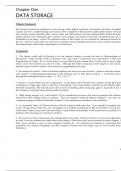Exam (elaborations)
Complete Solution Manual Computer Science An Overview 13th Edition Questions & Answers with rationales
- Course
- Institution
Computer Science An Overview 13th Edition Solution Manual Complete Solution Manual Computer Science An Overview 13th Edition Questions & Answers with rationales PDF File All Pages All Chapters Grade A+
[Show more]



